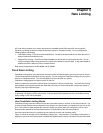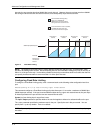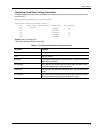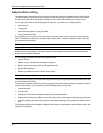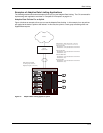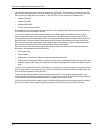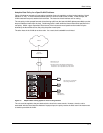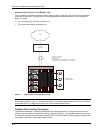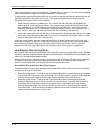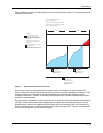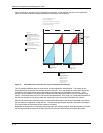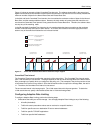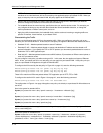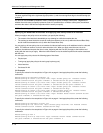
Rate Limiting
Adaptive Rate Limiting uses the following parameters:
• Average Rate
• Normal Burst Size
• Excess Burst Size
• Committed Time Interval
When you apply Adaptive Rate Limiting policies to an interface, you specify the first three of these parameters.
The fourth parameter is derived from the first two.
NOTE: When you configure these parameters, express the Average Rate in bits. Express the Normal Burst Size
and Excess Burst Size in bytes.
Average Rate
The Average Rate is a percentage of an interface's line rate (bandwidth), expressed as a number representing bits
per second (bps). The value can be from 256Kbps up to the maximum line rate of the port. For example, for a
100Mbps port, the maximum value is 100,000,000 bps. If the interface contains multiple ports (for example, a
trunk group or a virtual interface), the maximum value is the combined line rate of all the ports in the interface.
Normal Burst Size
The Normal Burst Size is the maximum number of bytes that specific traffic can send on a port within the
Committed Time Interval, and still be within that traffic's rate limit. The minimum value is 3277 or 1/10th of the
Average Rate (whichever is higher), and the maximum value is the Average Rate.
Excess Burst Size
The Excess Burst Size is the maximum number of additional bytes (bytes over the Normal Burst Size) within the
Committed Time Interval that can be transmitted. The Excess Burst Size can be a value equal to or greater than
the Normal Burst Size up to the maximum number of bytes the interface can forward within the Committed Time
Interval (explained below).
Depending on how the rate limiting is configured, the device can take different actions for traffic within the Normal
Burst Size and traffic that falls into the Excess Burst Size. For example, you can forward all traffic in the Normal
Burst Size and reset the precedence to a lower priority for all Excess Burst Size traffic, or even just drop that
traffic.
NOTE: Do not set the Excess Burst Size to a value greater than the maximum number of bytes the interface can
forward within the Committed Time Interval. Even if the software allows you to specify a higher value, the
interface cannot forward more data than its line rate supports.
Committed Time Interval
The Committed Time Interval is a value representing a slice of time on the interface where you apply the Adaptive
Rate Limiting. The slice of time can be from 1/10th second up to one second. This parameter establishes the
granularity of the Adaptive Rate Limiting. This parameter also determines the maximum value of the Excess Burst
Size.
The Normal Burst Size counter increments during this slice of time, then reverts to zero when the next slice of time
starts. The Excess Burst Time counter increments during every two Committed Time Intervals, then reverts to
zero. See “How Adaptive Rate Limiting Works” on page 4-10.
The Committed Time Interval is not directly configurable, but is instead derived from the following formula:
• Normal Burst Size / Average Rate = Committed Time Interval
For example, you can configure parameters for a port as follows:
• Average Rate (in bits) = 10000000
• Normal Burst Size (in bytes) = 12500 (1000000 bits), which is 1/10th the Average Rate. 1/10th is the
minimum value.
4 - 9



